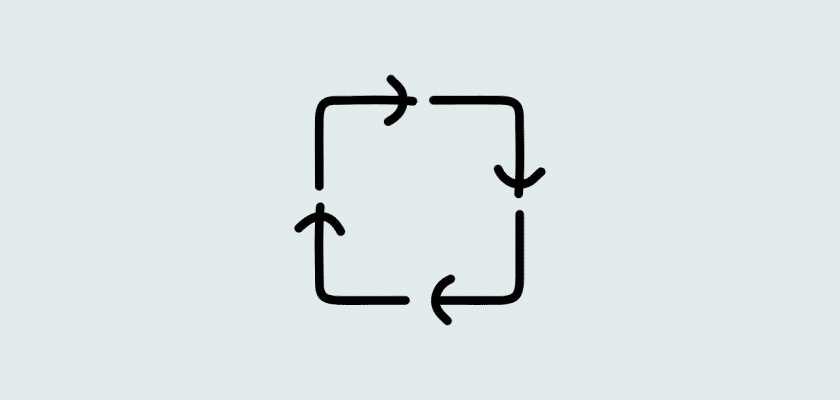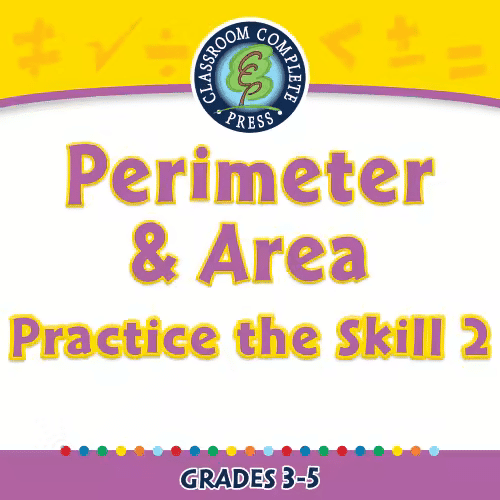Math concepts are taught more effectively using real-life context and tangible tools. Perimeter is one of those concepts that NEEDS it. Students need to see and experience it to fully understand it. This way, they can connect their everyday experience with perimeter to what they learn in the classroom.
Area and perimeter are usually taught separately, which is necessary overall. Still, it is worthwhile introducing the concepts simultaneously before closing in on one of them and going into detail. This will make them less likely to confuse the two, which happens surprisingly often.
When you introduce perimeter to your students, physically show them by walking around the classroom perimeter. Then I let them do it and ask them to outline the edge of their desk, notebooks, or other objects with their fingers.
Anchor charts are the perfect tool for teaching perimeter. An anchor chart is a visual representation of a concept, or procedure students can refer to as they learn. Aside from hanging on your classroom wall, anchor charts benefit students in many ways. They all learn differently, and working with an anchor chart can help. Visual learners will benefit if you use your chart as an interactive tool, but kinesthetic learners will also benefit if they are involved in its creation. In addition, students will be more inclined to understand and refer to your chart if they were involved in its design.
Table of Contents
- Elements of a good perimeter anchor chart
- Different ways to use anchor charts to teach perimeter
- Perimeter resources from Teach Simple
- Other resources
Elements of a good perimeter anchor chart
Be visual
This will come up repeatedly, regardless of what your anchor chart is covering. Always offer clear, colorful visual examples. Many students rely on visual information to consolidate information.
Use manipulatives
An anchor chart should represent what has been demonstrated physically, especially in math. The information on the chart will only hold meaning if it’s based on experience. Manipulatives are objects that kids can physically interact with and manipulate to learn new concepts. Let them work with concrete objects before transferring the information onto your chart. For example, Lego is the perfect teaching tool for talking about perimeter. Plus, children love them!
Use context
Whenever possible, use real-life examples when teaching math concepts to kids. For perimeter, this means using spaces that your students are familiar with/.
Involve your students
Make your chart interactive, and let your students participate in the process. For example, leave empty spaces on your anchor chart and let them fill it out with definitions, examples, and step-by-step instructions.
Decorate your classroom
Your classroom is an anchor chart waiting to happen. There are so many areas that can be highlighted and labeled to illustrate the perimeter. For example, line your door frame with perimeter flash cards. Once you get to area, the door itself can be labeled. If students pass this display on their way out of the classroom daily, they will eventually get it.
Different ways to use anchor charts to teach perimeter
Show it in as many ways as you can
Familiarize the students with the different ways perimeter can be explained or expressed
Perimeter Person
Let your students create a person (or creature, monster, robot, or whatever goes) using grid paper. They can measure the edge and establish the perimeter, and you can revisit it when you cover area.
You can do a similar thing using students’ names.
Start simple, but leave room to grow
You will need to start simply with squares and rectangles, but ensure your students know that perimeter also applies to regular and irregular polygons.
Perimeter resources from Teach Simple
This Emoji Worksheet is a great activity that will leave you with a great classroom display.
Area and Perimeter Emoji Math Activity

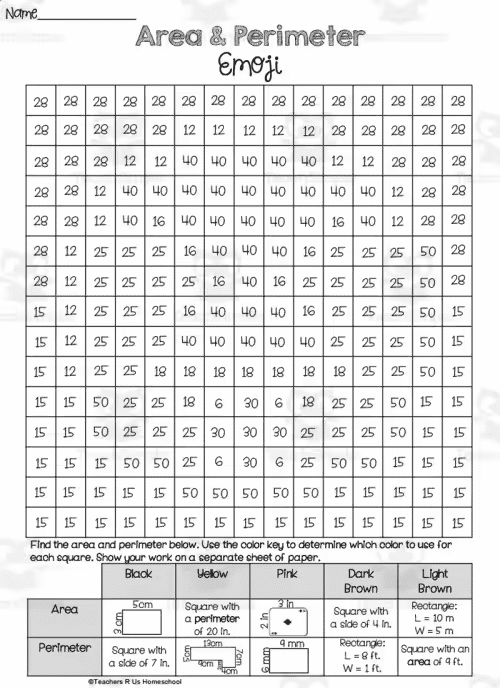
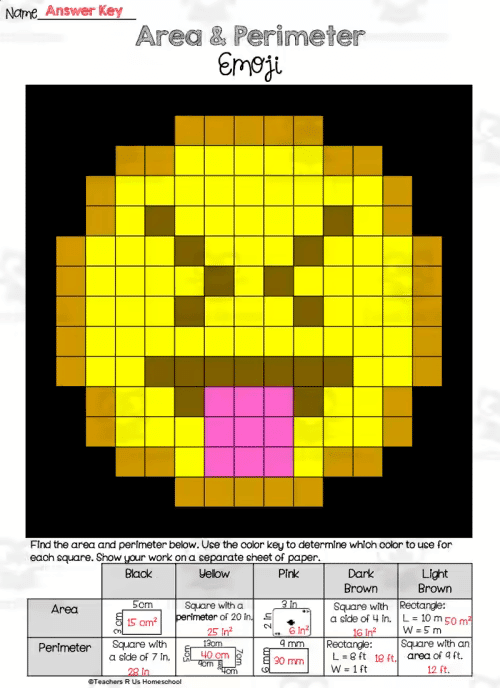
LEGO Design Project
This LEGO Design Project is great for students to practice perimeter and will eventually support your area lessons. First, students will use the grid paper to design a LEGO character of their choice. Then, once they are finished designing and coloring their character, they’ll use the grid paper to determine the perimeter.

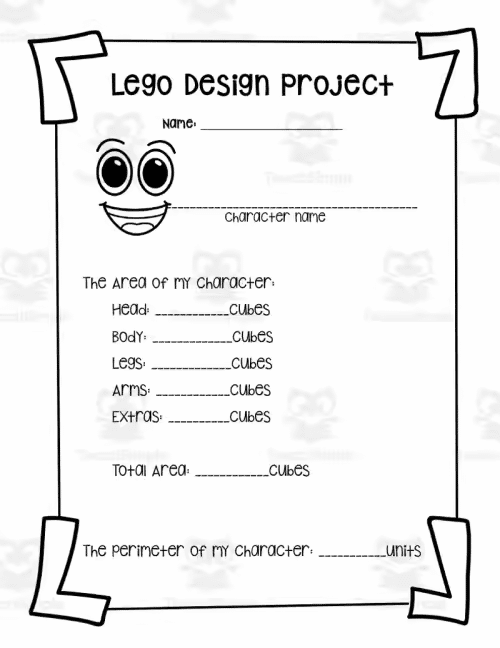
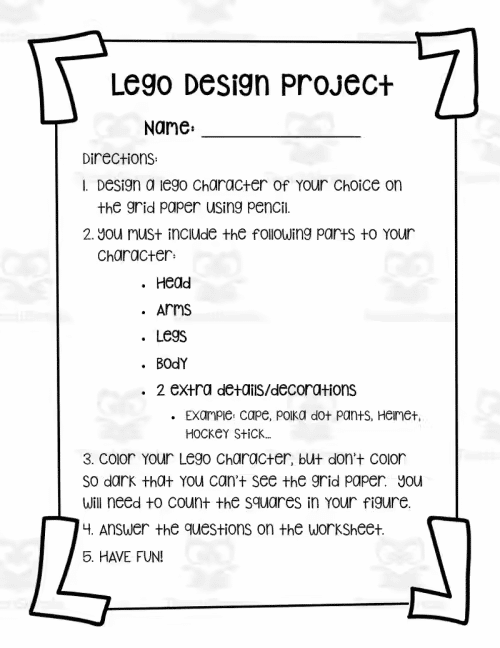
Poolside Perimeter Task Cards
Are you looking for a fun measurement activity that your learners can dive into? These swimming pool-themed task cards are perfect for your students to practice and review their measuring perimeter skills.
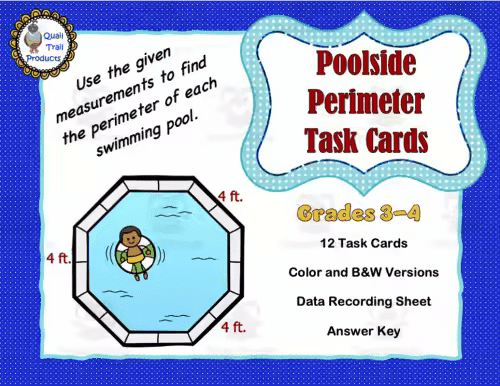
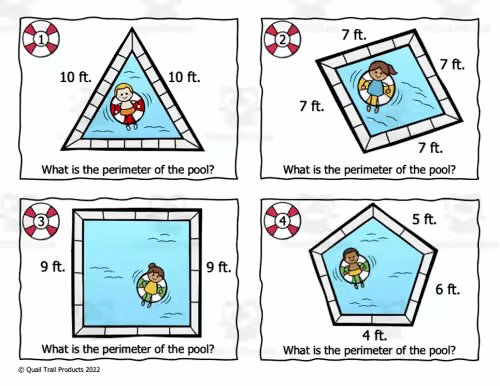
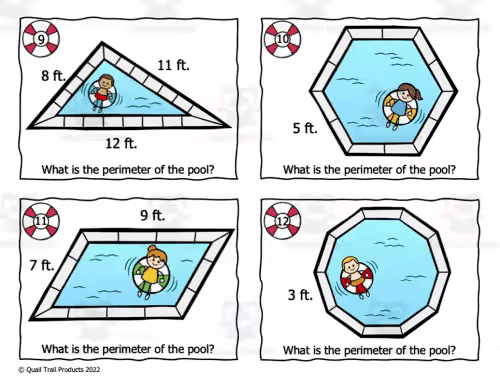
Perimeter Math Maze (for area too)
This Perimeter Math Maze will have students starting at the box that is titled “Ready, Set, Go!”. They use their answers to guide them to the end of the maze. Students show their work on a separate sheet of paper and staple it to the back of this worksheet.
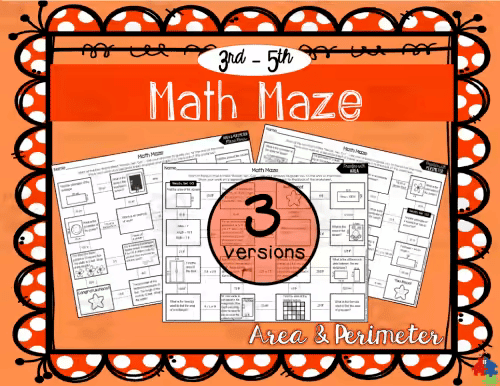

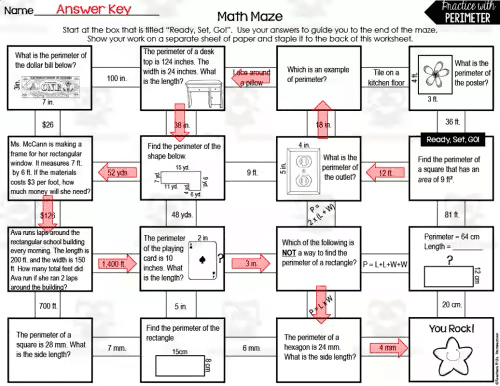
Perimeter Scenarios Worksheet
This is great for providing real work scenarios when practicing perimeter.
Digital products
We have learned very quickly to adapt our classrooms to the digital realm. Even now that we are back to teaching in person, many of us have embraced digital platforms for homework activities and test practice. These games and software packages will save you a ton of time. Some will also support your area lessons when you move on.
Interactive Digital Math Game: Area and Perimeter

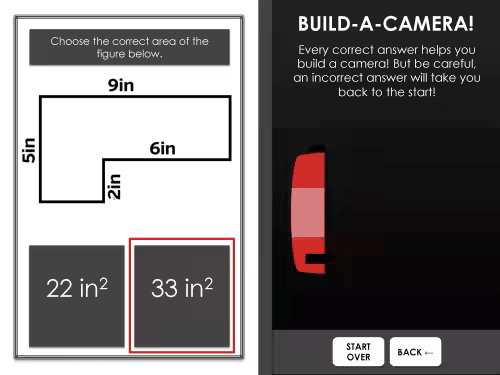
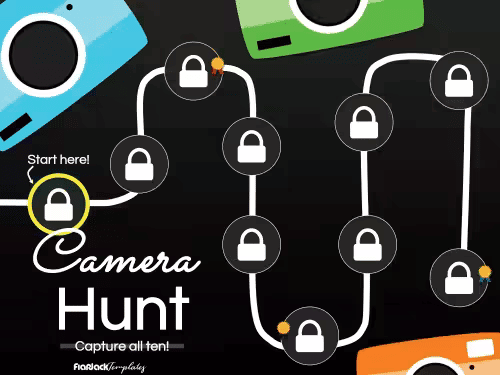
Digital Math for 3.MD.8 – Perimeters of Polygons

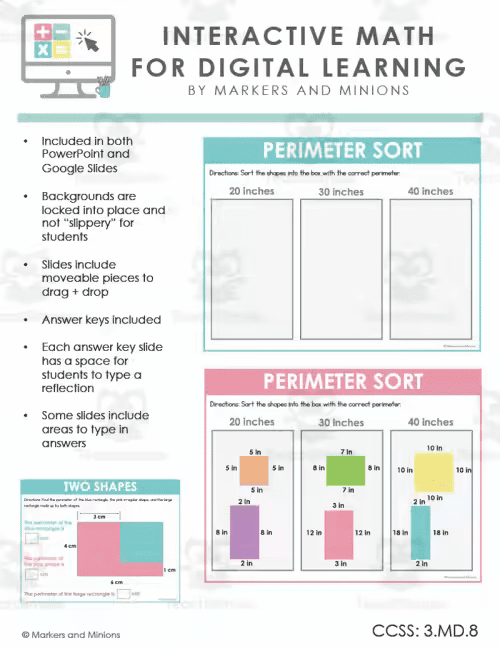
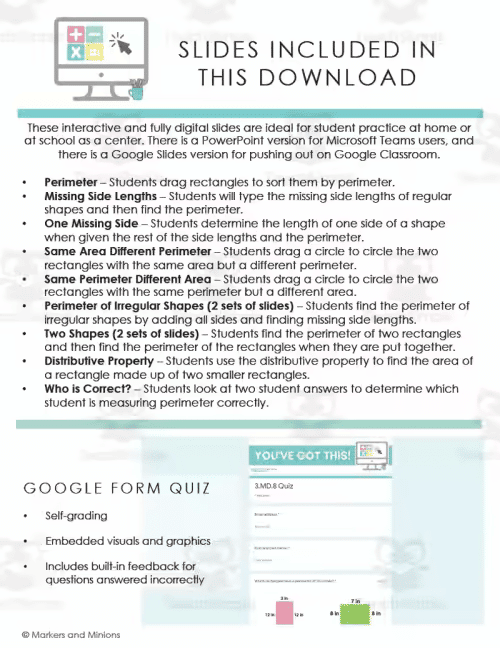
Measurement: Perimeter & Area – Practice the Skill 1
Measurement: Perimeter & Area – Practice the Skill 2
Other resources
Perimeter Anchor Charts
These simple charts visually represent the concept of perimeter. Using terminology and showing formulas are a great resource for students as they need to remember which terminology and formulas apply to perimeter and the shape they are measuring. The details will depend on the grade level.
Design and creativity
Love project-based learning? These projects are perfect for 3rd grade, 4th grade, or 5th grade. Perfect as assessments, practice, extension activities, bulletin board displays, or test prep!
Games based learning
Kids love games, and when they are practicing math at the same time, it’s a win-win situation.
Perimeter is one of the very first geometry skills your students will learn after basic shape. It also paves the way for area and volume, so it needs to be taught well. So, you will be delighted to see tons of resources that will inspire your anchor charts or supply them completely. Some activities will support you as you build your chart, and others are perfect to use afterward to see how your students are doing. Some are free, some are paid, but all of them will inspire you.
